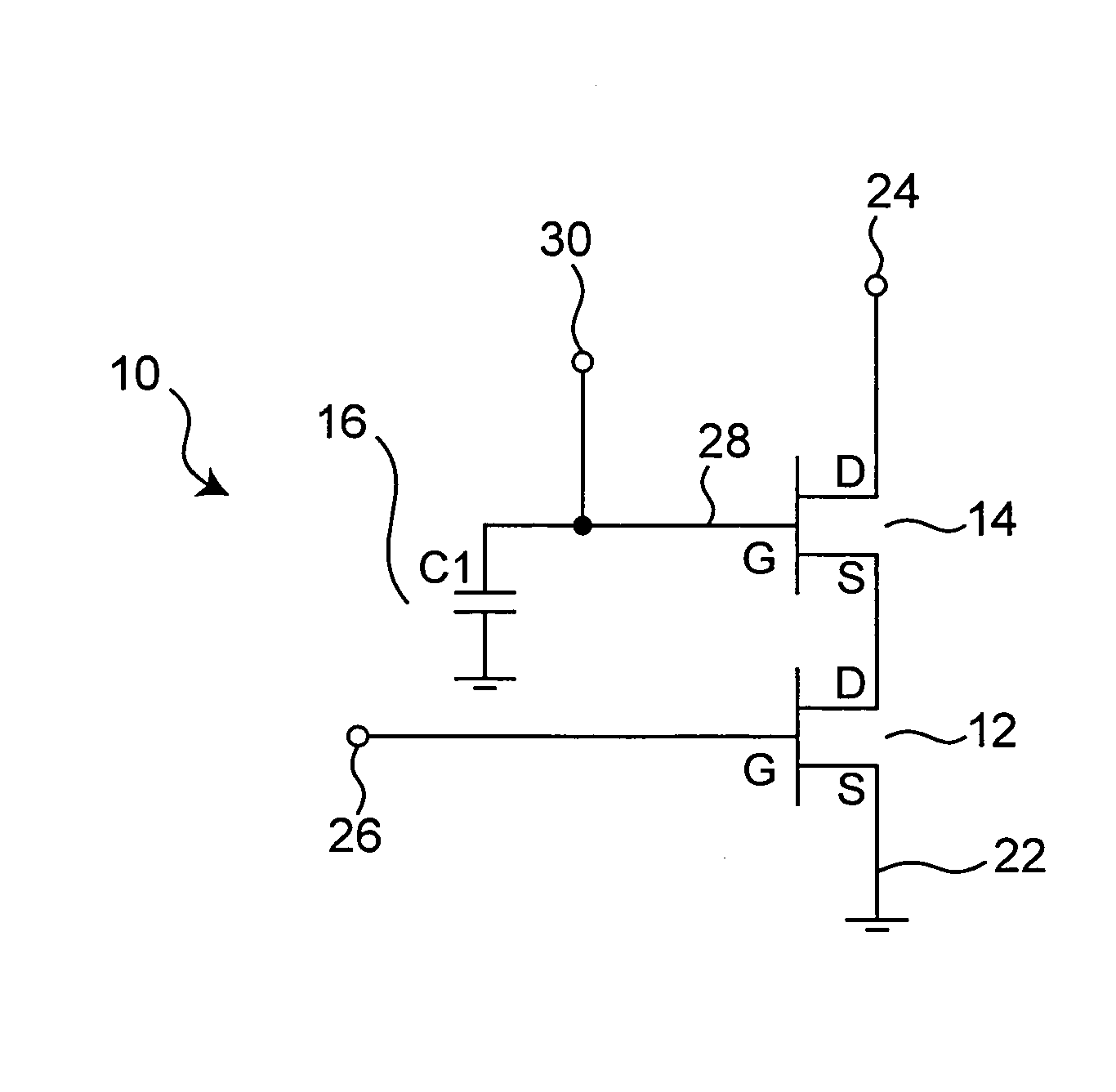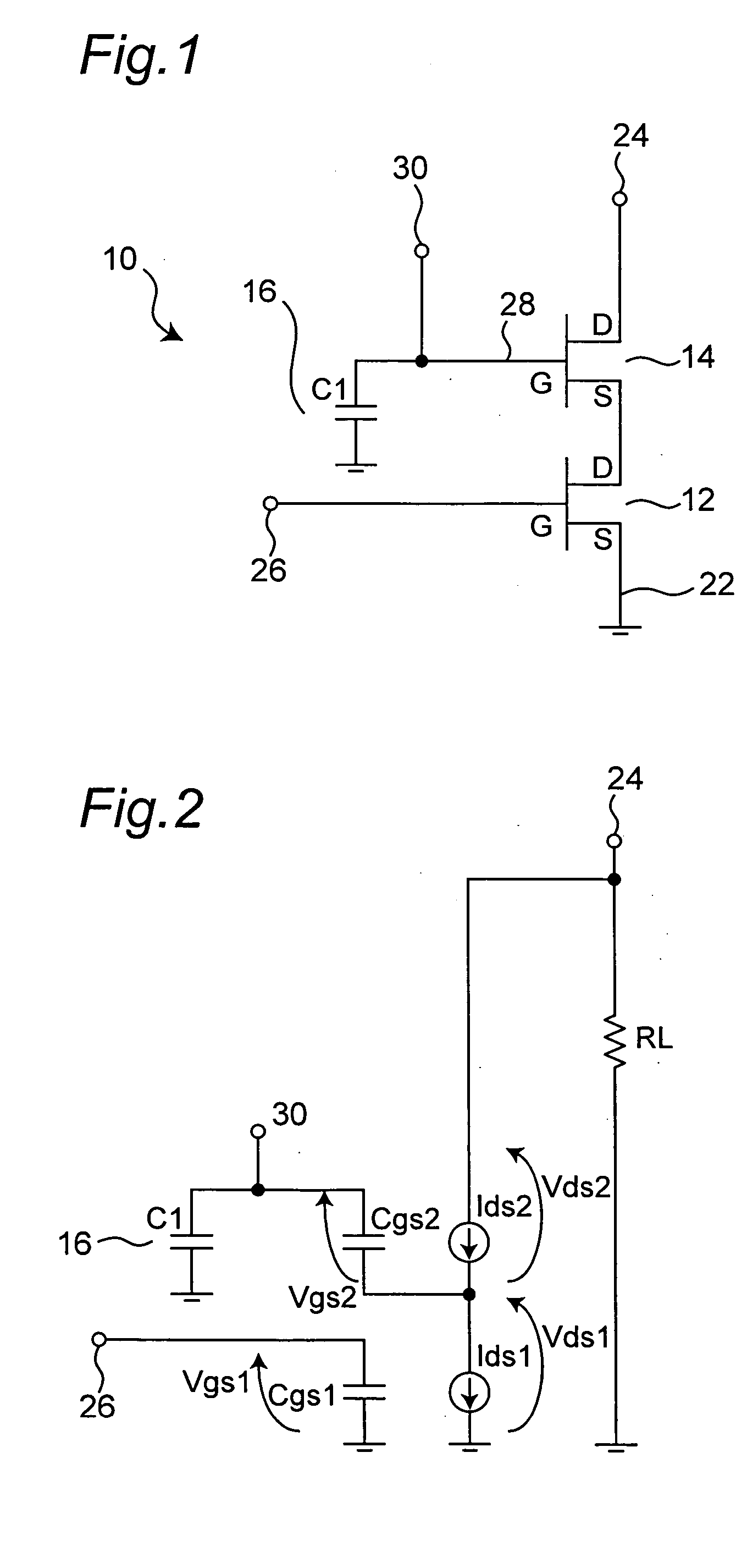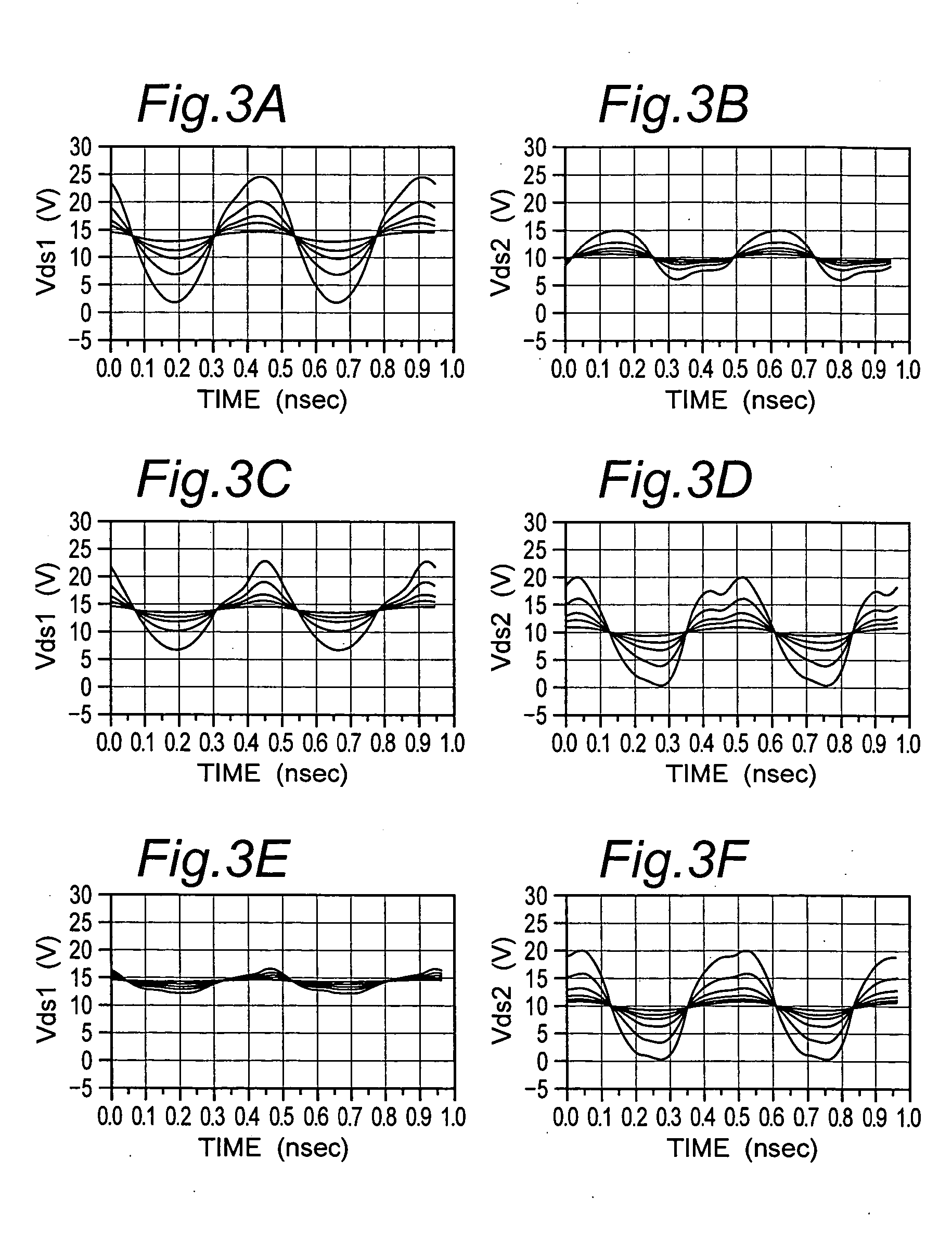Cascode circuit and integrated circuit having it
a cascode circuit and integrated circuit technology, applied in the field of cascode circuits, can solve the problems of low output power low efficiency of the cascode circuit, etc., and achieve high output power, high efficiency, and high power.
- Summary
- Abstract
- Description
- Claims
- Application Information
AI Technical Summary
Benefits of technology
Problems solved by technology
Method used
Image
Examples
1st embodiment
(1st Embodiment)
FIG. 1 shows a cascode circuit according to a first embodiment of the present invention. As shown in FIG. 1, the cascode circuit 10 includes two junction FETs which are cascode-connected successively. The cascode circuit 10 includes a first N-type junction FET 12, a second N-type junction FET 14, and a capacitor 16. Hereinafter, the junction FET is simply referred to as “FET”. The first FET 12 and the second FET 14 have the same characteristics. A source terminal (S) 22 of the first FET 12 is grounded, and a drain terminal (D) thereof is connected to a source terminal (S) of the second FET 14. A drain terminal (D) 24 of the second FET 14 is connected to an alternating current power supply (an average of the power supply voltage: Vdd). A gate terminal (G) 26 of the first FET 12, the source terminal (S) 22 of the first FET 12, and the drain terminal (D) 24 of the second FET 14 act as a gate terminal, a source terminal, and a drain terminal of the cascode circuit 10, re...
2nd embodiment
(2nd Embodiment)
FIG. 4 shows a cascode circuit according to a second embodiment of this invention. A cascode circuit 40 shown in FIG. 4 is different from the cascode circuit 10 shown in FIG. 1 in that the gate voltage setting terminal 30 is eliminated, and a first resistor 42 and a second resistor 44 are added. One end of the first resistor 42 is connected to the gate terminal 28 of the second FET 14, and the other end thereof is connected to the source terminal of the first FET 12 (that is, the other end thereof is “grounded”). The second resistor 44 is connected between the gate terminal 28 and the drain terminal 24 of the second FET 14.
In the cascode circuit 40 shown in FIG. 4, a voltage to be applied to the gate terminal 28 is determined by using the first resistor 42 and the second resistor 44, which divide a voltage between the drain terminal 24 of the second FET 14 and the ground. Thus, unlike the case in which the voltage is applied to the gate terminal 28 by using a gate ...
3rd embodiment
(3rd Embodiment)
FIG. 14 is a circuit diagram of a cascode circuit according to a third embodiment of this invention. The cascode circuit of the third embodiment is different from that of the second embodiment in that the one end of the first resistor 42 is not grounded but is connected to the gate terminal 26 of the first FET 12.
FIG. 15 is a top view of the integrated circuit having the cascode circuit of this embodiment. FIG. 15 shows an electrode pattern in which three cascode circuits are connected in parallel on the substrate 50. The electrode pattern shown in FIG. 15 is different from that shown in FIG. 6 in that an electrode 82 connected to the first gate electrode 68 is disposed adjacent to the electrode 72, instead of the electrode 76, that the first wire resistor 78, corresponding to the first resistor 42, is connected between the electrode 72 and the electrode 82, and that the second wire resistor 80, corresponding to the second resistor 44, is connected between the elect...
PUM
 Login to View More
Login to View More Abstract
Description
Claims
Application Information
 Login to View More
Login to View More - R&D
- Intellectual Property
- Life Sciences
- Materials
- Tech Scout
- Unparalleled Data Quality
- Higher Quality Content
- 60% Fewer Hallucinations
Browse by: Latest US Patents, China's latest patents, Technical Efficacy Thesaurus, Application Domain, Technology Topic, Popular Technical Reports.
© 2025 PatSnap. All rights reserved.Legal|Privacy policy|Modern Slavery Act Transparency Statement|Sitemap|About US| Contact US: help@patsnap.com



